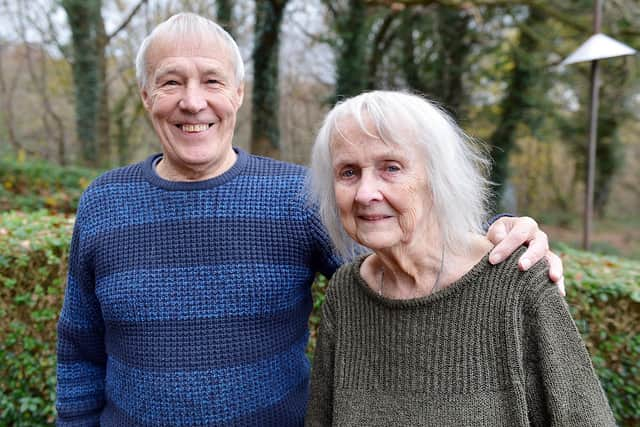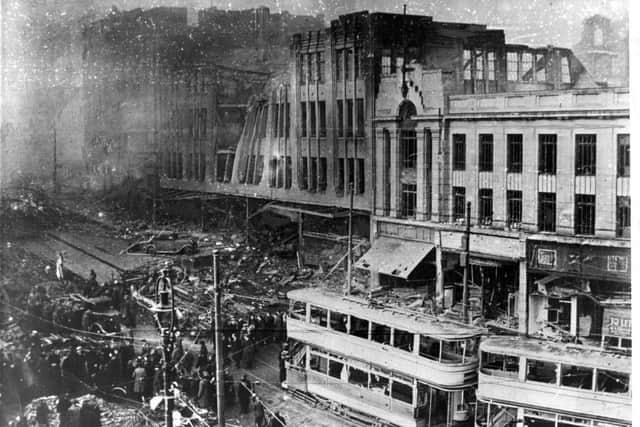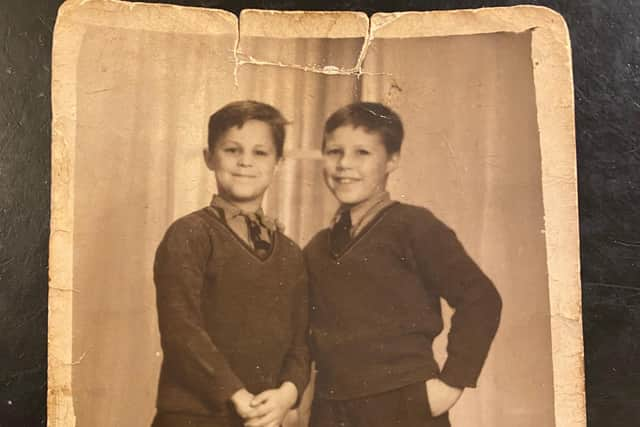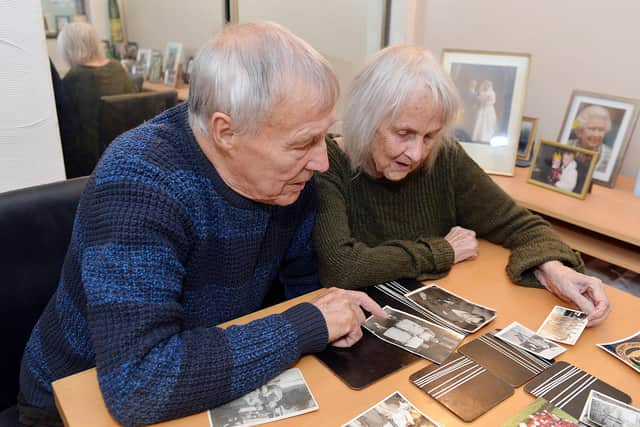‘We knew it was real’ – Sheffield couple recall the night city came under attack
and live on Freeview channel 276
Brian Tyree, aged 85, and his wife June, aged 83, were four and two at the outbreak of war in 1939, when Britain was plunged into a battle for national survival with Nazi Germany.
The pair grew up just yards away from each other on Woodside Lane in Pitsmoor, living among family and friends in the tough but tight-knit neighbourhood on the outskirts of Sheffield city centre.
Advertisement
Hide AdAdvertisement
Hide AdBut their happy childhood was thrown into doubt by war, with Anderson shelters springing up in every street and gun batteries installed in preparation for the Nazi onslaught.


Despite living so close to each other, Brian and June were in different shelters on the night of December 12, 1940, when the Luftwaffe began their assault on the city.
The German bombers pummelled Sheffield all night, hoping to knock out the city’s industrial heart and disrupt the British war effort.
When the all-clear was sounded, it was clear the Nazis had failed in their objective, but large parts of the city were left ablaze while dozens of buildings were knocked down and hundreds of people lay dead.
Advertisement
Hide AdAdvertisement
Hide AdThankfully, Brian and June stayed safe that night, but the destruction changed their lives forever.


Speaking at the home they have shared for the last 60 years on the Gleadless Valley estate in south-east Sheffield, they spoke of their recollections of that night 80 years ago.
While their memories are understandably affected by their ages at the time of the bombings and the intervening years, many of the sights and sounds of that awful night are still burned into their minds.
“I can remember the noise and the whistling of the bombs as they fell - followed by big explosions when they landed,” said Brian.
Advertisement
Hide AdAdvertisement
Hide Ad“I don’t remember much about the shelter but I do know we were packed in like sardines and it was so dark. We knew what was happening was real.


“When the all-clear came we went outside and my house had been bombed. It had been blown away.”
After June was allowed out of her shelter, a more substantial brick building not far from Brian’s, she remembers being held up by her mum to look towards the city at the fires raging in Netherthorpe.
“It was shocking,” she said. “My mum had a sister who lived on St Philip’s Road so she was really worried about them.”
Advertisement
Hide AdAdvertisement
Hide Ad“There had been a group of Ack Ack anti-aircraft gunners put in the woods just behind where we lived so people from the area went to thank them the next day.”


In the days following the bombardment, as people in their neighbourhood and across Sheffield picked up the pieces, Brian’s family’s situation was even more desperate.
His dad had recently abandoned the family, never to be seen again, leaving his pregnant mum and two boys of five and three to fend for themselves.
After their house was destroyed, the authorities clearly felt this was too much for a single mother to cope with and placed Brian and his younger brother Cyril into care.
Advertisement
Hide AdAdvertisement
Hide AdThey were initially placed in a Dr. Barnardo’s home in Sheffield but shortly after were transferred to a home in Dorset, where they would spend the next five years.
“June’s mum wanted to adopt me but they wouldn’t allow it,” said Brian.
“I’m just glad she didn’t as I never would have ended up marrying her.”
“I suppose they moved us down there to be away from the danger but we could still see dogfights happening over the channel,” he added.
Advertisement
Hide AdAdvertisement
Hide Ad“The home was luxury compared to what we had come from though. June always says I came back posh.”
After the war ended, Brian was transferred to another Dr. Barnardo’s home in Eastbourne before finally coming back to Sheffield in 1950.
However, even so long after the Blitz, the scars left by the bombing could still be seen, nowhere more so than in the twisted and mangled girders of the High Street building that later became C&A.
“There were big holes in the ground and we used to play in the bombed-out buildings,” said Brian.
Advertisement
Hide AdAdvertisement
Hide Ad“It wouldn’t pass any health and safety tests these days but we enjoyed it.”
Brian joined the army in 1953 and served for three years before marrying June at Christ Church on Pitsmoor Road, just a few minutes walk from where they had both grown up.
He then worked in the sheet metal industry and eventually set up his own business, Tyree Fabrications, which is now run by two of his sons.
Looking back, the couple say that despite the traumas of their youth, they have both led remarkably happy lives.
Advertisement
Hide AdAdvertisement
Hide AdThey went on to have three sons, five grandchildren and three great-grandchildren, and celebrated their diamond wedding anniversary in 2016 with a letter of congratulations from Her Majesty The Queen.
And they still go to the Armistice Day commemorations in London to this day, keen to say thank you to those whose sacrifice our nation’s survival depended upon.
“We are alright. We had a good life even though we were war babies,” said Brian.
“But I’ll never forget the people who gave their lives for us.
“We were the lucky ones - we came through it.”